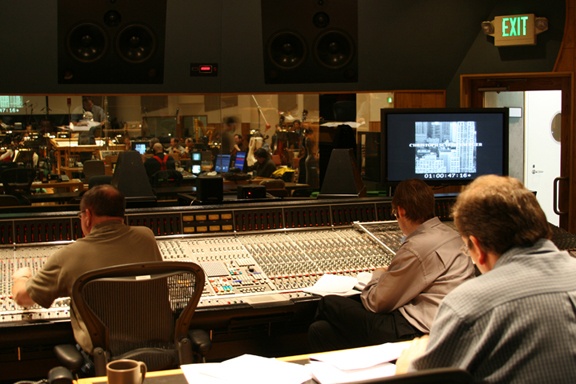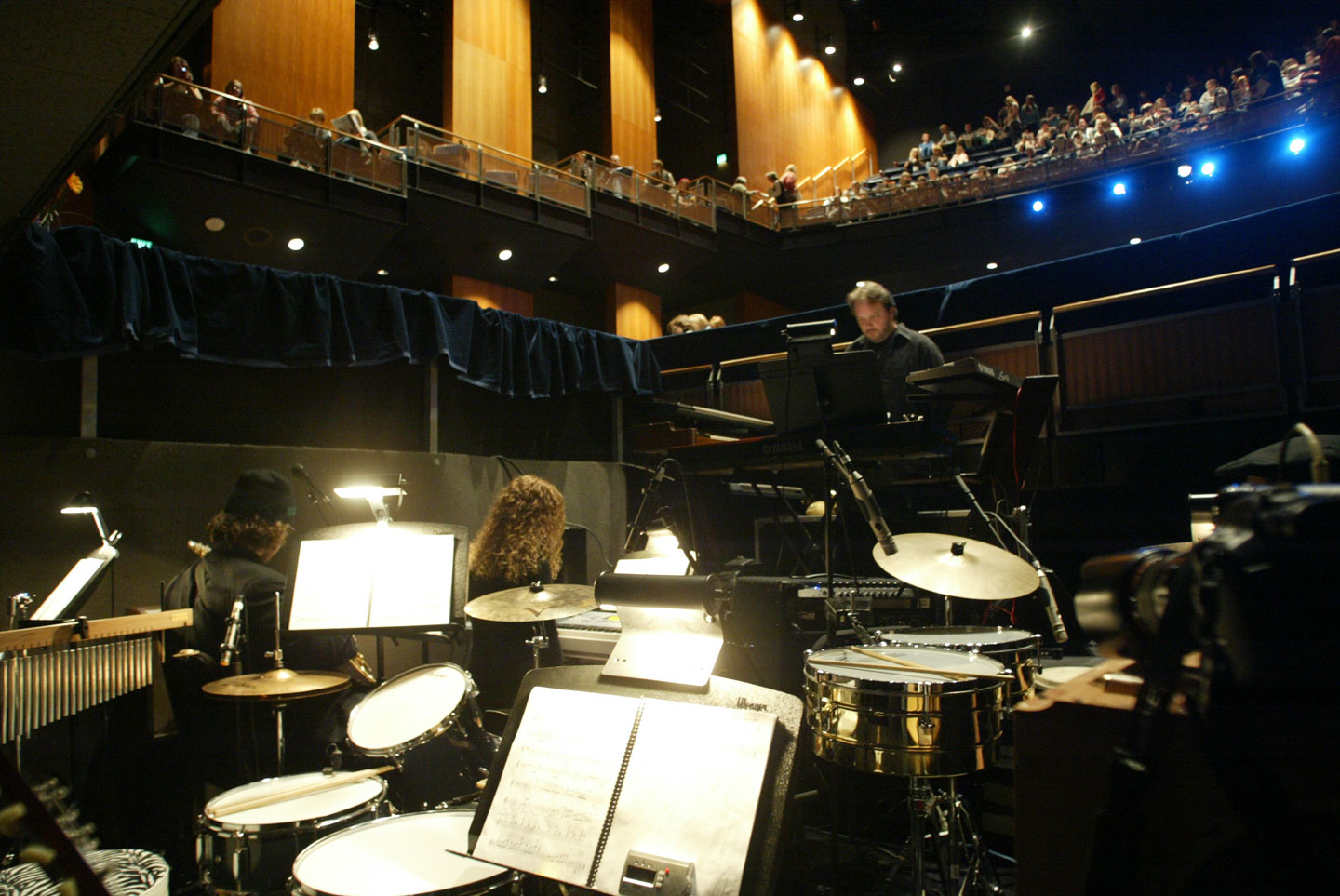by T. Perry Bowers
A little under 20 years ago I ran my first recording session. I had a little Roland VS-880, a few microphones and a passion for helping bands. My first client was a now well-known metal band in the Twin Cities. We put together a 4 song EP and I charged them $3 per hour. We tracked the whole thing in a dank 13’ by 18’ practice space in Saint Paul. When I say dank, I mean it. Sometimes it felt like it was raining inside the room. We moved our gear away from the leak and carried on. We tried to enlist the landlord’s help but he pulled up in his Porsche SUV, mumbled something about a roofer and took off.
 Enough about my meager beginnings. Since then, I’ve engineered and produced hundreds of sessions.
Enough about my meager beginnings. Since then, I’ve engineered and produced hundreds of sessions.
This article is about how to prepare for a recording session. Keep an eye out for another article (coming up soon) with some tips on how to get the most out of a session once you’re in the studio.
So, how do you know you’re ready to make a studio recording?
You’ve probably already made a few demos in your practice space. They might sound ok, but you want something that represents your band in the best possible way. Your band needs to be (at least mostly) united on the idea of spending time and money making a recording. (OK, your drummer might be grumbling about not having a job and having to move his gear, but for the most part you guys needs to be in agreement). If you’re at this point it’s time to find a studio and start your studio prep.
The Click Track
A click track is another term for metronome. It’s the piercing sound that keeps everyone in tempo. It’s absolutely paramount for your whole band to be solid with a click before entering a recording studio. It makes overdubs possible, helps with musical pauses, ensures the song is the same tempo from beginning to end and eliminates tempo fluctuations, etc.
Refer to my previous blog entry “How to Rehearse Your Band” if you want tips on practicing to a metronome. The general idea is to pump the click through the PA and play your songs to it until the band is tight. It will help immensely if individual players practice to a click in their own time.
If you’re going into a studio without being completely solid with a metronome, you’re making a big mistake. There are times when recording sans click is great but don’t forego the click because of your inability to perform with it. Do it because you’re so solid to a click that you don’t even need it.
Tuning Guitars and Drums
Again, refer to my previous entry for tips on getting your guitars in tune. You need to be in tune from the first fret to the last, with your strings open or fretted. Just tuning to a tuner isn’t enough. Your string may be in tune when you pluck it open, but sharp when you hammer a chord. If your guitar isn’t properly set up take it to a reputable shop to get it sorted. I recommend Kenny Rardin. He’s never let me down. In fact, I will have him submit a guest entry here to address this specifically.
Tuning your drums is also imperative. Do this with a mindset of diligence and patience. (I’ll go into specifics in another entry). It boils down to getting each drum to make one pleasant tone, without any overtones or undertones. It isn’t easy to learn but once you get it the process is quick and simple. Be willing to experiment on one drum until you get it right and start over as many times as needed. Keep in mind that snares and kicks are a little different to toms.
Once your kit is sounding great in your space, you have to consider the impact of transporting it to the recording studio. The new environment, the humidity, the temperature and even the size of the room will effect the sound of your kit. It’s best to allow your drums to acclimate to the new environment as long as possible. The studio owner may let you drop your set off the night before your session. This allows the drums to get used to the space before you do your final tuning. Just a few tweaks of the batter head should be enough to get them right. Unless you live in Minnesota like me, where the environment you transport your set through is colder than the surface of Mars, you should be fine.
Preparing Your Voice
Singing is arguably the most important part of your recording session. If the vocals aren’t compelling, the recording won’t be either. Every singer has a different style and delivery. Back in the 70s, David Lee Roth used to smoke cigarettes and eat cheeseburgers before recording to make his voice sound good. We’re not all David Lee Roth and most of us need to take good care of our voice at all times. Hydrate your body, which will in turn, hydrate your vocal chords. Bring liquids and teas into the studio with you. Minimize your caffeine intake as caffeine de-hydrates you. Warm up your voice with vocal exercises before heading into the booth.
Recording Strategy
Before you arrive at the studio, your band and the engineer should have a clear idea how the session will go. Usually a studio proprietor will give you a lot of free consultation before your first session. He is trying to win your business so he wants you to know he is good at what he does. It’s a good time to extract information – when the studio owner is in sales mode. Work with him to get a clear timeline and recommendations on how to get the best recording in his studio. An engineer should be flexible and opinionated at the same time. If you have a strong sense of how your band should work in the studio and the engineer isn’t flexible, you might end up butting heads. On the flip side, the engineer is giving you good advice because he knows his studio so don’t argue with him. There is a fine line; use your intuition at this stage of the process.
Every band will have their own formula for recording. Devise a strategy that works for you. I recommend getting the drums down tight first. The drums are often the most time consuming part of recording. Set up can take a couple hours. Once the drums are done, move on to the other instruments (guitars, bass, keys, etc.)
Finally, move on to the vocals. Don’t expect to complete more than one or two songs per session when recording vocals. The freshness leaves the voice after one or two takes of a song so plan accordingly. I’ve never seen a singer last more than an hour or so before they are burned out. Vocal sessions are done in short sessions after all of the instrumental tracks are complete.
The other day I had a singer in the studio who nailed her lead vocal from beginning to end on the very first take. She couldn’t believe she had it perfect and thought she needed to fix it. She kept going back and fixing parts, but when the session was over we scrapped all of her fixes and went back to her very first take. She had so much more emotion and aliveness in the original take that any slight imperfections were irrelevant. Sometimes the imperfections add to the humanness of the vocal. It’s another fine line to consider.
When the lead vocal is done, you can work on harmonies, do some auxiliary percussion or spice up the tracks.
Lastly, when creating your strategy, keep the capability of the studio in mind. Do they have enough microphones to record everyone live? Are you sacrificing microphones or pre-amps if you record live? You may be at the very bottom of the engineer’s microphone case by the time you mic up your 1968 Marshall 50 watt plexi. And that wouldn’t be doing it justice would it?
Mix and Mastering
Mixing is performed after all the tracks have been recorded. Usually engineers mix one song per session. Depending on how many tracks (drums, guitars, keys, vocals, etc) there are in the song, mixing a song can take between 3 hours and 2 days (or more). Mixing for long periods fatigues the ears, so keep the mixing sessions at a reasonable length.
The final step is mastering and it’s done after all the songs are mixed. This process helps match volume for all the songs so you’re not turning your volume knob up and down as the CD is playing. Mastering engineers work to match the frequency response in all of the songs as well, so the bass and treble sound similar from track to track. It’s a very important step. If you can afford it, plan to hire a mastering studio to put the final touches on your recording.
Good luck, rock on!

